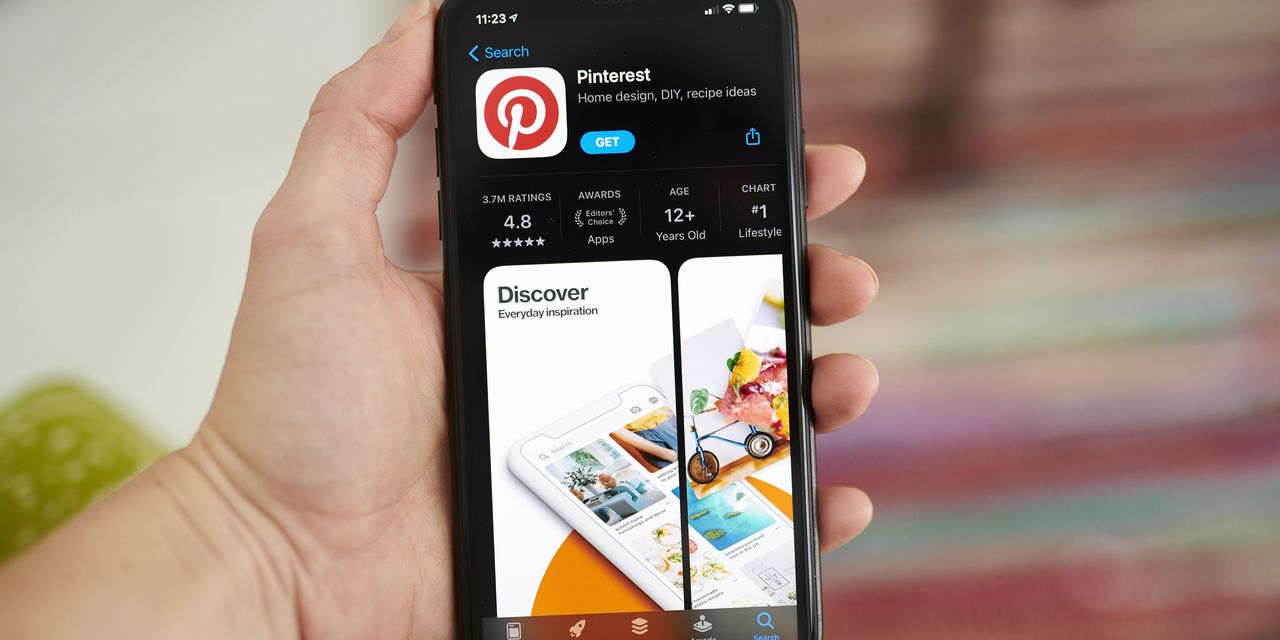Consumers are no longer glued to their computers. They are exploring the great outdoors, getting on airplanes again, dining out and enjoying friends and family. For
Pinterest,
PINS -6.01%
they are looking for inspiration in all the wrong places.
On the heels of banner results from social-media peers
Snap,
Inc.,
and
over the last two weeks, the image-sharing company on Thursday reported stellar revenue growth of 125% year-over-year in the second quarter. But Pinterest also said that, as lockdowns have eased, fewer people are using its platform than expected. Global monthly active users grew more than 6 percentage points slower than Wall Street had anticipated, and U.S. monthly active users actually declined by 5% year on year.
Pinterest said its engagement headwinds continued past the end of the quarter, with U.S. monthly active users declining at a more rapid clip than analysts had been modeling for the quarter. Shares fell more than 18% immediately following the report.
Pinterest is losing its audience at a particularly bad time. The pandemic has accelerated retailers’ shift online, and advertisers seem especially willing to pay up to acquire new customers, as the economy opens back up. Pinterest also has been hard at work on its own monetization efforts, integrating with
Shopify,
and expects to start on-platform transactions by the end of the year.
From a monetization standpoint, Pinterest is doing a lot right. As more business moves online, retailers will be able to track the return on their advertising dollars more easily than ever. With that in mind, Pinterest seems particularly well positioned to show what return advertisers are getting.
Morgan Stanley
estimates that 67% of its U.S. ad business is performance marketing, or ads focused on driving immediate traffic and sales, versus longer-term brand advertising. That estimate is the highest of all major social media players, according to the firm.
Overall, Pinterest’s results during the quarter show that its investments in driving monetization are paying off. Domestically, average revenue per user grew 103% in the quarter—more than double the growth shown in the first quarter and well above Wall Street’s expectation. Despite that improvement, Pinterest still is generating a lot less money from users than its immediate competitors. While not a perfect comparison, Snap’s results show it made more than $2 more per North American user than the $5.08 Pinterest made on its domestic “pinners” in the quarter.
For a longer-term investor, such numbers show that Pinterest has plenty of runway. For reference, Facebook just reported average revenue of over $53 for its users in the U.S. and Canada for the second quarter. However, in an increasingly competitive advertising environment, Pinterest will need to prove it can keep growing, especially as the company’s average revenue per user remains relatively low.
Pinterest’s stock is up 190% over the past year but has come down from its February peak. Thus far this year. the company’s stock has gained less than 10%, nose diving after first quarter earnings showed user growth beginning to slow—something the company at the time warned could continue. Thursday’s report offers confirmation.
Getting back to reality has been great for U.S. consumers. For Pinterest, not so much.
Write to Laura Forman at laura.forman@wsj.com
Copyright ©2021 Dow Jones & Company, Inc. All Rights Reserved. 87990cbe856818d5eddac44c7b1cdeb8













































